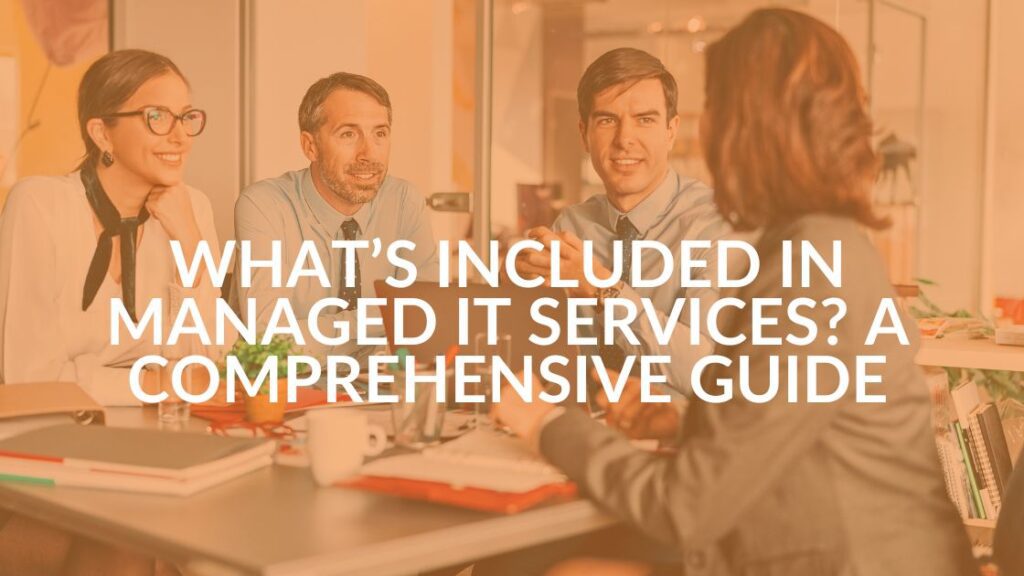Cloud Migration Nightmares and Tips

By now you know that migrating to the cloud is an absolute necessity for both large and small companies for better mobility and collaboration and business resilience. But you need to move to the cloud with a trusted and experienced cloud services company to avoid cloud migration nightmares.
As a managed service provider, we’ve seen the mess that can be made when cloud migration isn’t properly planned and implemented. Here are six common cloud migration mistakes to avoid.
1. Using an Inexperienced Team or Partner
Selecting the right partner to help with cloud migration is critical. Experience rather than familiarity or low pricing should be the deciding factor. Often there’s an inclination to give the task to an internal team whether they’re ready for it or not. Some of these choices lead to mistakes that increase costs in the long term.
2. Jumping the Gun
By all means move quickly, but also move wisely. Many on-premises workloads should be modified before moving them to a cloud. Some of them might not need to be moved at all. Perhaps an application should be rewritten before it is released in a cloud-native way. You might even need to replace it entirely with an SaaS-based alternative. Deferring the cost to modernize or replacing critical applications might prove to be more expensive than waiting until after migration, so don’t move too quickly.
3. Not Prioritizing Your Applications
Assessing which applications should move immediately and which should wait is the most critical phase in a cloud migration project. Failing to fully assess these workloads is a common mistake that thwarts success.
The infrastructure applications might need a different approach than the operations apps. Ask migration vendors to propose an initial cost at the start of the project, then submit a revised statement of work and final price after the application assessment phase is complete.
4. Not Defining the “Landing Zone”
Your “landing zone” is the environment you are migrating to that has been prepared to host the workload you need. A properly defined “landing zone” will include:
- Defined account structures.
- Federation to identity directories.
- Virtual private cloud (VPC) networking.
- Role-based access control (RBAC) roles and rule sets.
- Infrastructure for monitoring, security and configuration management.
The wrong or inadequate design and implementation of a “landing zone” can increase the costs of security and compliance. These environments need to be carefully considered well in advance of the migration and included in the scope of work.
5. Getting Stuck in Gridlock
Many applications are interdependent. Moving them before realizing their interdependencies can lead to incorrect grouping and ordering of application migrations, network performance issues and cascading delays. Soon your cloud migration is gridlocked.
Because of these gridlocks, migration takes more time than initially planned, incurring additional costs. I&O leaders have to map dependencies as part of the application assessment process to ensure appropriate migration timelines.
6. Hidden Costs
The “hidden costs” of migrating to a cloud should be carefully calculated. These include costs associated with transforming your organization to operate effectively in the public cloud or the residual costs of using the space previously occupied by the data center. Some of these might be unavoidable, but it is important to consider them as a part of the cloud migration budget.
Also, consider the:
- Cost of retraining existing teams.
- Cost of raising salaries to match cloud market salaries.
- Cost of changes to organizational structure and operating procedures.
- Cost to adopt agile DevOps practices across the IT organization.
- Losses in productivity due to vacated facilities and hardware, unused software licenses or unproductive staff.
- Cost to run duplicate versions of the same system during a migration move-over period.
Cloud Migration Should Be Seamless and Cost Effective
Seamless and cost effective transition to a cloud is possible if you do so carefully and with an experienced and knowledgeable partner. Need help? Contact us or book a no- obligation meeting.
Share this Blog

Is Your Name or Birthday a Part of Your Password?
If so, you’re a part of the 59 percent of people who don’t follow proper password hygiene. More than 70 percent of passwords are used for more than one system, meaning if cybercriminals crack one, they can access a lot more accounts.
Our free Enterprise Password Management Guide will give you the best password hygiene practices to help you secure your computer and your business.
Download the Guide
Explore the Latest Trends in IT

Edge vs Chrome Security: Which Is the Best Browser for Your Business?

Unlocking Security: The Power of Password Managers and Passkeys for Business Professionals

Intrust IT Acquires Commercial IT Support Division of Entegrity Consulting Group




